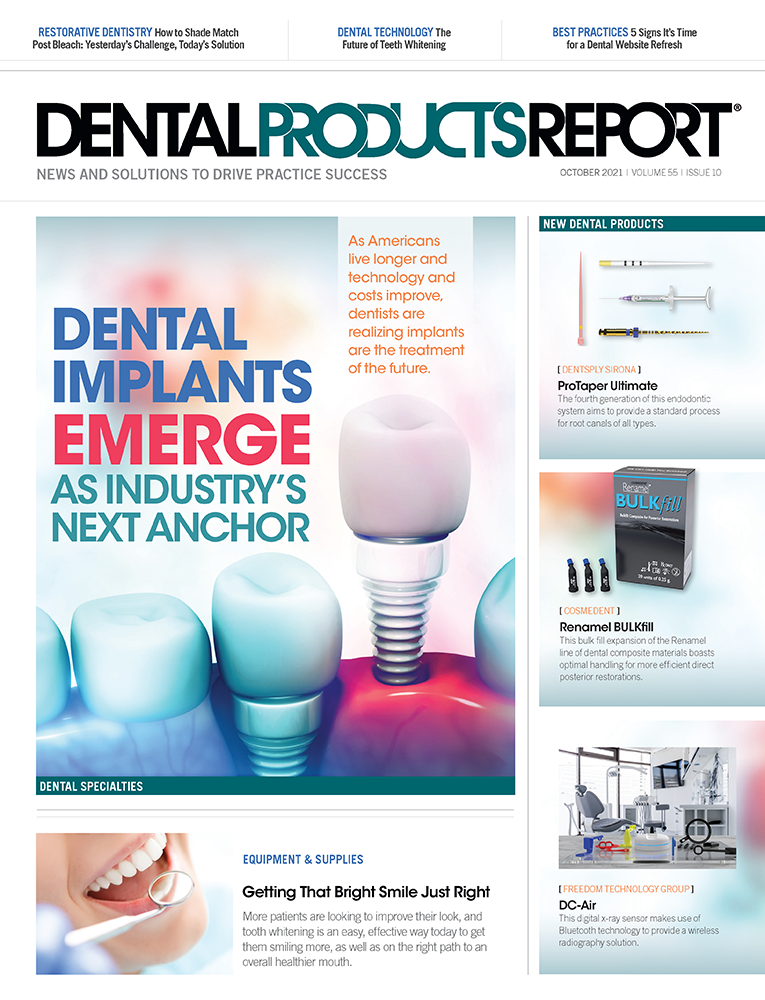5 Signs It’s Time for a Dental Website Refresh
And why now is the perfect time to give this powerful tool the attention it deserves.
KEBOX / STOCK.ADOBE.COM

Let’s talk about your dental practice website. When was the last time you visited your own site? Clicked through the pages? Updated the content?
If it has been a while, let this be your reminder to give your website some much-deserved attention. It can be a powerful marketing tool, if done correctly. Conversely, an outdated, slow, poorly designed site will turn away more patients than you may believe. In fact, 89% of patients say they began doing business with a dental competitor because of a poor online experience.
Will a website be the sole reason more business comes to you? Not entirely, but an updated, user-friendly site will drive more prospects to your practice, at which point your expertise and your staff’s customer service skills should be able to turn them into patients. Here are 5 signs that your website is outdated.
1.Your website does not perform well when viewed from a mobile device.
It used to be that all websites were designed for a desktop, but because smartphone usage has overtaken traditional desktop usage, websites now must be optimized for mobile devices. They ideally employ mobile-first design and can accommodate a range of screen sizes, ensuring that your website will be easily accessible, readable, and clickable, no matter what device a patient may be using. Another important point is that Google rewards mobile-friendly websites, so it’s important that your website must be optimized for mobile.
2.Your website is slow.
Anyone who has had to wait for a web page to load can understand how frustrating that delay can be. Today, 47% of users expect a website to load in 2 seconds or less. If your website is not loading quickly, there are likely other dentists with up-to-speed sites that patients will visit. Do not let that happen. Several factors could be slowing your website, so contact your web designer to see what needs to be done to resolve this. You do not want users to navigate away because it is too slow.
3.Your website is not secure.
Switching to an HTTPS (Hyper Text Transfer Protocol Secure) from an HTTP site may not seem like a top concern. However, for any dentist whose website has a patient login feature, keeping patient information secure is critical. An HTTPS provides a secure connection for users of your website and involves installing an SSL (Secured Socket Layer) certificate. In layman’s terms, it encrypts the data so that if a hacker should get into your website, none of your patients’ information will be compromised.
4.Your website is not serving your current patients.
Your website should appeal to prospective patients, but many features also can be added to streamline communication with current patients. More dentists are adding online appointment features so patients can schedule and change upcoming visits on the go, from the convenience of their smartphones. Accepting online payments is another convenient addition that can help boost collections and decrease the front desk’s workload. Allowing patients to complete and submit their health history updates and other forms online is another time-saver that they’ll appreciate.
5.Your website is not attracting new patients.
Did you know that most patients will go online to research a practitioner, even after getting a referral? That means your dental website will be front and center in their search for a new dentist, so the site needs to make the best first impression possible.
Your website should also have elements that today’s patients are looking for, including easy-to-find hours of operation and location/contact information (readable without having to pinch or zoom in), an updated “About Us” page with photos of the team, and links to social media and online review profiles. Live chat, online scheduling, and online patient forms and payments are other features sure to impress new and existing patients.
References
1. Pritchard J. Why user experience matters to marketing. WebFX. https://www.webfx.com/blog/marketing/user-experience-matters-marketing/ Accessed July 12, 2021.

How Dentists Can Help Patients Navigate Unforeseen Dental Care
December 12th 2024Practices must equip patients with treatment information and discuss potential financing options before unexpected dental treatments become too big of an obstacle and to help them avoid the risk of more costly and invasive procedures in the future.